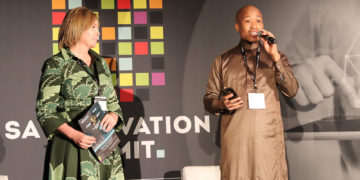Companies today need to have a clear vision about how they are going to be conspicuously different from their competitors. In an extremely competitive environment, ‘me too’ strategies are unlikely to be forgiven. Unless businesses offer something different to different groups of customers, they are likely to be swallowed up by the competition.
In his new hard-hitting book, The Innovator’s Manifesto, Michael Raynor, co-author with Clayton Christensen of the bestseller, The Innovator’s Solution, argues that disruption theory, which explains how fringe ideas come to redefine entire markets, is not only a useful idea — it stands alone in actually predicting future success.
How disruptive thinking started
In Christensen’s two books, The Innovator’s Dilemma and The Innovator’s Solution, he posited two different kinds of business innovations:
- Sustaining innovations are those that bring better products to an existing market. Most sustaining innovations are simple, incremental, year-to-year improvements. A useful analogy for a sustaining innovation is the quarter-turn-of-the-screw. With sustaining innovations, the odds overwhelmingly favour the incumbents.
- A disruptive innovation “brings to market a product not as good as the products in the current market, and so it cannot be sold to the mainstream customers. But it is simple and it is more affordable.” Disruptive innovations take root in a small niche of the market but eventually reach the mainstream. “I call that a disruptive innovation,” Christensen said, “not because it’s a breakthrough from a technological sense, but instead of sustaining the trajectory of improvement that has been established in a market, it disrupts it and redefines it by bringing to the market something that is simpler.”
A manifesto for growth
Whether you’re an investor, an entrepreneur, or a manager, you live with the unavoidable paradox that although you believe passionately in whatever specific undertaking you are committed to today, you understand that of the many initiatives you may undertake or be involved in, most will fail to be breakthrough winners.
Raynor’s The Innovator’s Manifesto contains new research showing how disruption theory is unique in its ability to help managers predict the success or failure of a company or product. He explains why disruption theory is so powerful — and provides the roadmap managers need — to use disruption theory to shape new products and ventures in their own industries in ways that make ultimate success possible.
So what do you do if you are not able to reliably pick or create successful innovations? Raynor suggests the following three-stage approach as state of the art in innovation management:
1. Variation
Start with lots of ideas
Ideas are brought to life by activities such as innovation competitions and teams that focus on developing great new ideas. It’s an approach taken by companies like Google which gives people some unstructured time to pursue projects that they are passionate about. Google believes that when you give smart people space to innovate, you unleash the power of imagination, ideas and connectivity to change the world. Despite its size, Google still maintains a start-up culture. Its work is project-based and its commitment to innovation depends on everyone being comfortable sharing ideas and opinions. Googlers have the opportunity to develop 20% Projects, where they take 20% of their work time to work on projects that they’re personally passionate about. One such project led to the development of Gmail.
The implicit belief is that since we cannot know in advance what the characteristics of a successful idea are, we have to get as many ideas as we can from as many diverse sources as we can.
2. Selection
Try out as many of your ideas as you can in the marketplace to see what works
We need some way of sorting the wheat from the chaff, and since we can’t rely on our judgement we try out as many concepts as possible in the market. We create ‘lean start-ups’ in the hope of ‘failing fast’ so we can ‘iterate’ toward a winning formula. Those concepts that meet with early approval from the market are the ones we deem likeliest to succeed.
Innovation usually results from trial-and-error experimentation and sometimes occurs incidentally where researchers produce something other than what they intended.
3. Retention
Stick with the successes and abandon the failures
In the hope that those products early adopters embrace have long-run potential, we commit to those and abandon the rest. As we scale up, we must live with the uncertainty that as we cope with the demands of growth, we can adapt effectively.
What this proves
According to Raynor, the apparent waste of this extravagant approach to innovation need no longer be meekly accepted. New evidence shows that disruption theory can materially and significantly improve predictive accuracy when creating or picking successful new businesses. The core of Raynor’s case for the predictive power of disruption theory is a study of Intel’s New Business Initiatives (NBI) group, whose job it is to investigate opportunities far afield from the company’s current operations. In this study, disruption theory proves to be a better predictor of new venture success and failure than other theories.
This conclusion was confirmed in a follow-up study in which MBA students were given business plans drawn from venture capitalist pitch decks and asked to use different theories to predict what happened to the companies. Over 500 MBA students from Harvard, MIT, and Ivey Business School in London and Toronto analysed a portfolio of 48 business proposals funded by Intel Corporation. After just one hour of instruction in disruption theory, 50% were more likely to pick businesses that survived in a business plan competition. Once again, disruption theory proved to be the best predictor of future success.
These results imply that it is possible to identify successful new businesses at the earliest stages of development. And the consequences for how we manage effective innovation programmes can be profound, says Raynor. Instead of ‘variation-selection-retention’ – a framework designed to compensate for our ignorance – we can now build upon our improved understanding with an entirely new paradigm.
If we can identify the predictors of disruption, he maintains, we can find and create those circumstances,
and therefore increase our likeliness of success.
The framework he suggests is three-pronged: Focus, Shape, and Persist. Focus on the disruptive ideas, shape them, and then stick with them. That’s how to ensure a greater likelihood of success:
1. Focus
Go where the money isn’t
Innovations consistent with the prescriptions of disruption theory are systematically more successful than those that aren’t. Consequently, we can focus our efforts on those markets and technologies that target un-served or over-served segments with greater confidence than ever before.
2. Shape
Seek ‘creative creation’
Rather than trying to find out what works by seeking to minimise the cost of failure, we can now build business models that conform to meaningful patterns of success. Specifically, by serving profitable segments that incumbents deem inconsequential, new businesses can create a valuable foothold. Then, by building their businesses around ‘enabling technologies’ – elements of their business model that allow performance to improve over time – entrants can move from that foothold to positions of mainstream dominance.
3. Persist
Don’t fail fast, learn fast
Disruption improves predictive accuracy, but we’re still a long way from 100%. What this means is that although we can more confidently commit to specific markets, technologies, and strategies, there is still a lot to learn. Learning, however, demands persistence: the willingness to stick with something despite early setbacks. And that persistence need no longer be the product of blind faith, but can instead be based on solid empirical evidence.
Most theories of innovation base their prescriptions for action on explanations of the past. Disruption is perhaps the only theory of innovation to have been tested for predictive power using a portfolio of actual businesses. And the results suggest that a revolution in how innovation is managed is upon us.
Raynor offers many examples of disruptive innovation – innovations that took root in a small niche of the market but eventually reached the mainstream and dominated them:
- The Internet was a disruptive innovation to newspapers.
- Toyota was a disruptive innovator with its Toyota Production System of lean manufacturing and process improvement.
- Southwest Airlines was a disruptor with its low cost carrier strategy.








